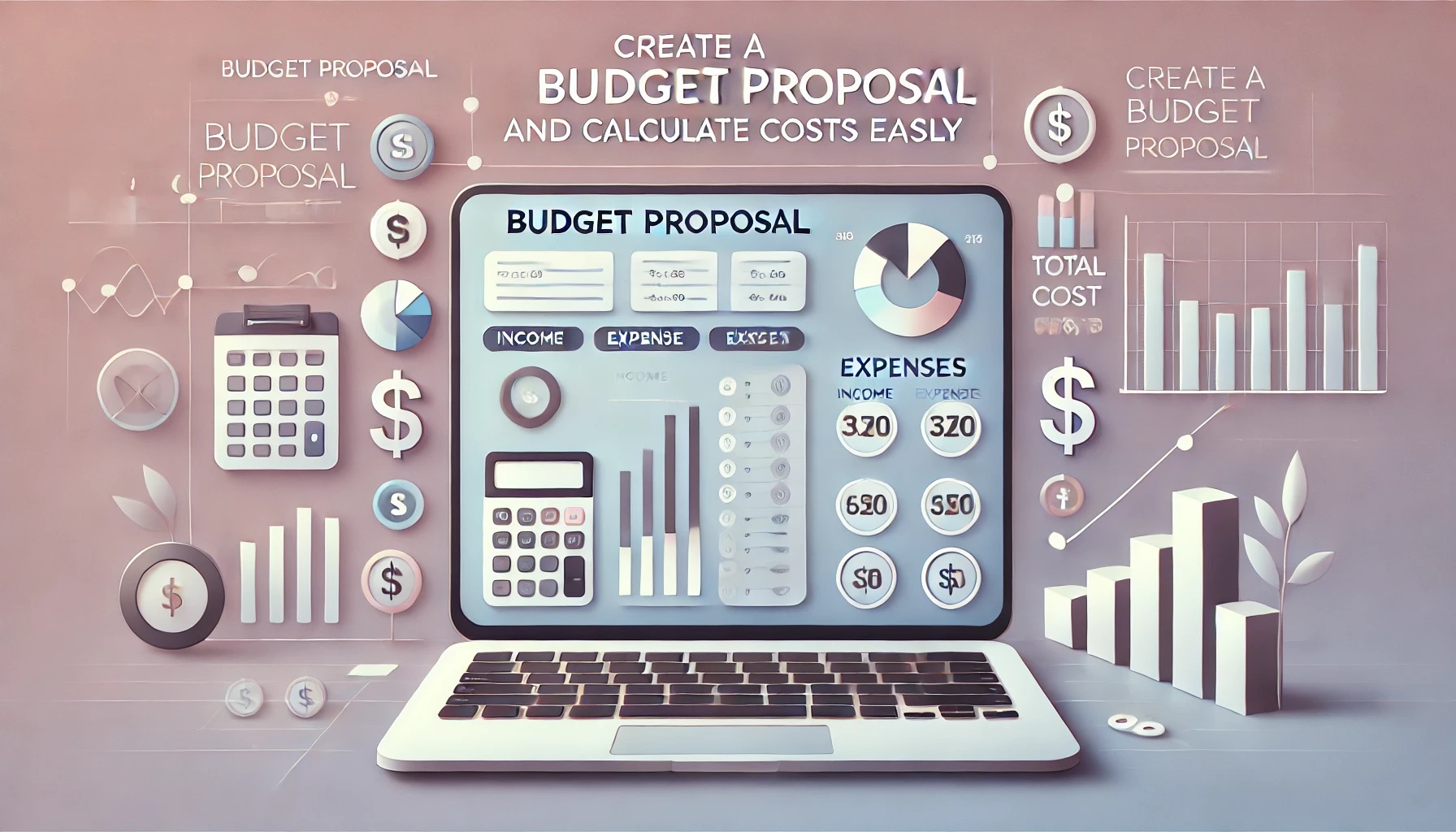Every successful project begins with a meticulously crafted budget proposal. This document is not only a roadmap for resource allocation but also a testament to your organization's dedication to financial accountability and efficiency. A Budget Proposal Template serves as the cornerstone of this process, enabling you to organize costs, forecast revenues, and present a compelling case to stakeholders and investors.
In this guide, we’ll delve into the components of a budget proposal, the importance of creating one, and step-by-step instructions for building a robust template. Plus, we’ll share free templates to help you get started. Let’s explore!

Budget Proposal Template: Definition
A budget proposal is a detailed document that outlines all projected costs associated with a specific project. Its primary purpose is to provide a clear financial overview from project initiation to completion, enabling stakeholders to evaluate feasibility, approve funding, and monitor resource utilization.
What Should a Budget Proposal Include?
A well-rounded budget proposal accounts for every expense tied to the project. These costs can be categorized into four key groups:
1. Direct Costs
Direct costs are directly attributable to the project. Examples include:
- Labor costs (e.g., salaries, wages, and benefits of team members dedicated to the project).
- Materials or services required for specific project tasks.
- Fees for external consultants, contractors, or specialists.
2. Indirect Costs
These are general expenses that indirectly support the project. Examples include:
- Overhead costs such as rent, utilities, and administrative expenses.
- Insurance premiums and general operational costs.
3. Equipment and Materials
This category encompasses the physical and digital tools necessary for project execution. Examples include:
- Machinery, software licenses, or hardware.
- Raw materials or supplies for production.
4. Travel and Miscellaneous Costs
Unforeseen or auxiliary expenses fall under this category. Examples include:
- Travel expenses (e.g., transportation, lodging, meals).
- Training programs, certifications, or workshops.
- Taxes, regulatory fees, or other compliance-related costs.
Why Should Your Company Create a Budget Proposal?
An accurate budget proposal provides numerous advantages, ensuring your organization remains financially sound, transparent, and prepared. Here’s why a budget proposal is indispensable:
1. Ensures Financial Transparency
Transparency fosters trust among stakeholders. A clear breakdown of costs allows everyone involved to understand exactly how resources will be allocated and utilized.
2. Showcases Cost Efficiency
An organized budget proposal highlights your company’s ability to optimize resources. Demonstrating cost-effective practices can build confidence among investors and stakeholders.
3. Highlights Project Impact
A detailed budget showcases the potential impact and significance of the project, illustrating how it aligns with organizational goals and industry needs.
4. Facilitates Profit Forecasting
Accurate budgeting allows for realistic profit projections, helping stakeholders evaluate the project’s financial viability and potential returns on investment.
How to Build a Proper Budget Proposal Template
Building a professional budget proposal involves several critical steps. Here’s a step-by-step guide to creating an effective template:
Step 1: Define Project Objectives
Start by clearly outlining the project’s purpose and scope. Include key details such as:
- Start and end dates.
- Deliverables and milestones.
- Expected outcomes and benefits.
Step 2: Organize Costs into Categories
Structure your proposal by dividing expenses into the four primary categories (Direct Costs, Indirect Costs, Equipment and Materials, Travel and Miscellaneous Costs). This format ensures clarity and allows stakeholders to review the document with ease.
Step 3: Break Down Costs Further
Provide detailed breakdowns for each category. For example:
- Cost Type: Specify the nature of the expense (e.g., employee salary, equipment rental).
- Amount per Unit: Include the unit cost (e.g., hourly rate, price per item).
- Quantity: Indicate the required number of units (e.g., 15 licenses, 200 hours).
- Total Cost: Calculate the total for each item.
- Cost Explanation: Optionally, provide a brief justification for the expense.
Step 4: Calculate Overall Costs
Aggregate all individual costs to determine the total project budget. Be sure to account for:
- Contingency funds for unexpected expenses.
- Legal or regulatory fees.
- Desired profit margins.
Step 5: Submit for Approval
Include a section for stakeholder review and approval. This may involve signature fields, dates, and a summary of key figures to ensure alignment and buy-in.
Budget Proposal Templates
Here are free, customizable templates to simplify your budgeting process. Each is compatible with Microsoft Excel and can be tailored to suit your organization’s needs.
1. Free Budget Proposal Template
- Description: A straightforward template for categorizing costs, including utilities, professional services, and travel.
- Download: Smartsheet Template.
2. Yearly Proposal Budget Template
- Description: Designed for long-term projects, this template includes sections for equipment, fringe benefits, and annual tracking.
- Download: Templatelab Template.
3. Simple Budget Proposal Template
- Description: Features income and expense categories with calculations for net revenue and profitability.
- Download: Vertex42 Template.
The Bottom Line
A Budget Proposal Template is an essential tool for any project. By outlining costs, categorizing expenses, and forecasting financial outcomes, you demonstrate professionalism and build trust with stakeholders. Effective budget proposals secure funding, ensure financial transparency, and pave the way for project success.
If you’re looking for additional resources to enhance your business operations, explore the vast collection of templates and tools available on RoyalCDKeys. From marketing strategies to project management solutions, we provide everything you need to streamline your processes and achieve your goals.
Source: Budget Proposal Template or How to Calculate Your Costs!
Don’t forget to explore our previous post: Utility Bill Calculator Template to Cut Costs